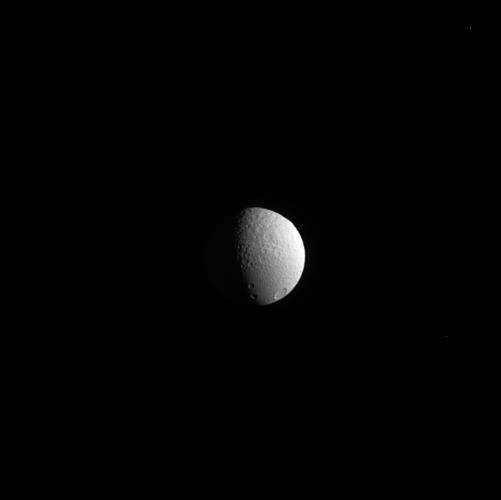Tethys’ Terrains

| PIA Number | PIA17164 |
|---|---|
| Language |
|
Tethys' trailing side shows two terrains that tell a story of a rough past. To the north (up, in the image) is older, rougher terrain, while to the south is new material dubbed "smooth plains" by scientists.
The smooth plains are roughly antipodal to the large impact crater Odysseus. Odysseus, which is on the far side of Tethys (660 miles, or 1,060 kilometers across) from this perspective, is out of view. (See Epic Odysseus for a view of Odysseus.) It's thought that the impact that created Odysseus also created the smooth plains, although exactly how this happened is not yet clear.
This view looks toward the trailing hemisphere of Tethys. North on Tethys is up and rotated 2 degrees to the right. The image was taken in visible light with the Cassini spacecraft narrow-angle camera on Nov. 27, 2013.
The view was obtained at a distance of approximately 1.1 million miles (1.8 million kilometers) from Tethys. Image scale is 7 miles (11 kilometers) per pixel.
The Cassini-Huygens mission is a cooperative project of NASA, the European Space Agency and the Italian Space Agency. The Jet Propulsion Laboratory, a division of the California Institute of Technology in Pasadena, manages the mission for NASA's Science Mission Directorate in Washington. The Cassini orbiter and its two onboard cameras were designed, developed and assembled at JPL. The imaging team is based at the Space Science Institute, Boulder, Colo.
For more information about the Cassini-Huygens mission visit http://saturn.jpl.nasa.gov or http://www.nasa.gov/cassini . The Cassini imaging team homepage is at http://ciclops.org .
Credit: NASA/JPL-Caltech/Space Science Institute
